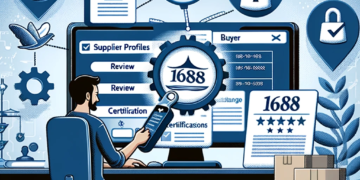You probably don’t wake up excited about logging receipts or chasing your team down for reimbursement forms. Yet for many small business owners, finance managers, and decision-makers, expense management is one of those necessary evils. It has to be done—and done right—or your budget bleeds, your reports get messy, and your stress levels spike.
Modern expense management tools promise to take the sting out of the process. They offer automation, accuracy, and time savings, wrapped up in slick dashboards and cloud integrations. But are they all sunshine and savings? Not quite. Like any tool, they come with both benefits and trade-offs.
Let’s break it all down, so you can decide if—and which—tool fits your business best.
Why Expense Management Tools Exist
Let’s face it: the old-school way of handling expenses—collecting physical receipts and manual data entry—isn’t just tedious. It’s risky. People forget things. Spreadsheets get corrupted. Small errors slip through and snowball into bigger financial mistakes.
That is where modern expense management tools come in. At their core, they help you do three things: track spending, enforce policies, and reimburse employees—without losing your mind in the process.
Picture this: An employee makes a business purchase, snaps a photo of the receipt on their phone, and uploads it into an app that automatically categorizes the expense and sends it to the right manager for approval. That’s not a futuristic dream—it’s how smart companies are already handling their spending. And it’s a game-changer.
When your system connects with your accounting software, your HR tools, and your company card? You cut down manual entry, reduce errors, and get real-time visibility into where your money’s going. That’s why modern expense tools aren’t just a luxury anymore—they’re becoming a necessity.
Comparing Popular Expense Management Tools
If you’ve been trying to pick a good expense management tool, you’ve probably come across Ramp and Expensify more than once. These two platforms dominate the conversation for good reason, but they’re built with slightly different users in mind.
Ramp leans heavily into automation and control. It doesn’t charge fees, works well with accounting tools like QuickBooks, and gives companies corporate cards that help them stay on top of budgets. It’s especially handy for startups or teams scaling fast who want real-time visibility into where the money’s going.
Expensify feels a bit more laid-back. It’s built with travelers and field teams in mind—think people who are always scanning receipts or logging miles. It takes care of reimbursements automatically and keeps things simple with receipt scanning. Plans typically start at around five dollars per user, per month, but the price tag depends on what features you need.
Both tools are solid. The right pick depends on your budget, company structure, and what kind of control or flexibility you need.
Want a more in-depth comparison of the two? Check out this full comparison: Ramp vs Expensify.
Must-Have Features in Any Expense Tool Worth Its Salt
Choosing expense management software isn’t just about finding the shiniest app. You need tools that actually solve your day-to-day problems.
1. Automation
Manually tracking expenses? That’s how receipts get lost and errors slip through the cracks. It’s way easier when the software handles the boring bits—like matching receipts, syncing to your books, or nudging someone for approval.
Imagine this: an employee grabs printer ink on the company card, snaps a photo of the receipt. An automated system categorizes the expense, applies company policy, and sends it off for approval—all in a few clicks. No emailing receipts. No chasing managers. No mistakes.
2. Integration
Your expense tool should actually work with the rest of your systems. If it doesn’t connect with payroll, HR, or accounting, you’re probably wasting time copying data between platforms—and that’s when mistakes creep in.
Using QuickBooks or NetSuite? Make sure the tool plugs right in. The fewer tabs you’re flipping between, the better.
3. Ease of Use
Be honest—if the software feels like a puzzle every time you open it, your team’s going to avoid it. And if they’re not using it, what’s the point? Look for something that’s easy to pick up, even for people who hate dealing with expense reports.
Tools that are easy to use save time—both for employees entering expenses and for finance teams overseeing the big picture. When everyone finds it painless to use, you’ll see cleaner data, fewer mistakes, and faster reimbursements.
What Else Should You Consider Before You Commit?
Beyond features, there are a few practical factors that should guide your decision.
Pricing
Some tools charge per user, others per report or transaction. Some, like Ramp, are free but make money through card interchange fees. The key is knowing not just what it costs upfront, but whether it actually saves you time or just looks cheap on paper.
Scalability
You might be small now, but will the tool grow with you? Look for platforms that can handle multiple departments, international teams, or high-volume transactions. Switching tools later can be a real headache.
Customer Support
Things will go wrong. When they do, can you get help fast? Look for platforms with responsive customer service, solid documentation, and live support when you need it.
Security
You’re trusting this tool with sensitive financial data. It should offer bank-level encryption, multi-factor authentication, and clear data privacy policies. Don’t compromise here.
And here’s the most important bit: Always start with your needs. Don’t just choose what’s popular—choose what actually fits the way your business operates. Run a trial, test it with your team, and look at how it fits into your overall workflow before committing long-term.
Conclusion
Modern expense management tools can be lifesavers—but only when you pick the right one. The best tool is the one that simplifies your life, saves your team time, and gives you better control over your company’s spending.
So take your time. Map out your biggest pain points. Try a couple of tools. Talk to your team. And above all, don’t be afraid to ditch that bloated spreadsheet once and for all.











































































